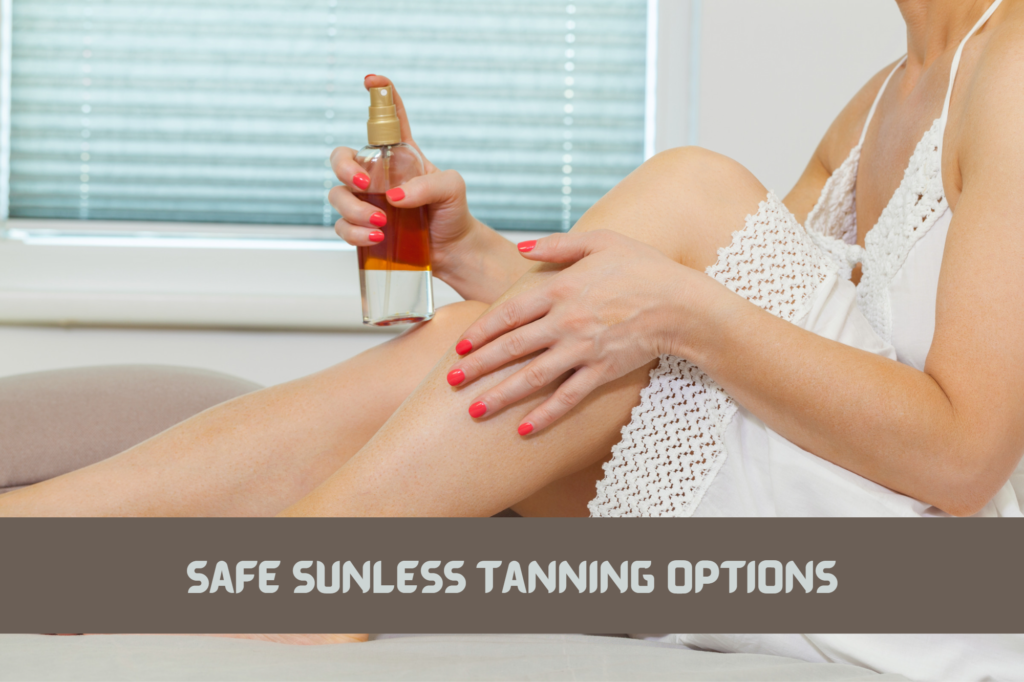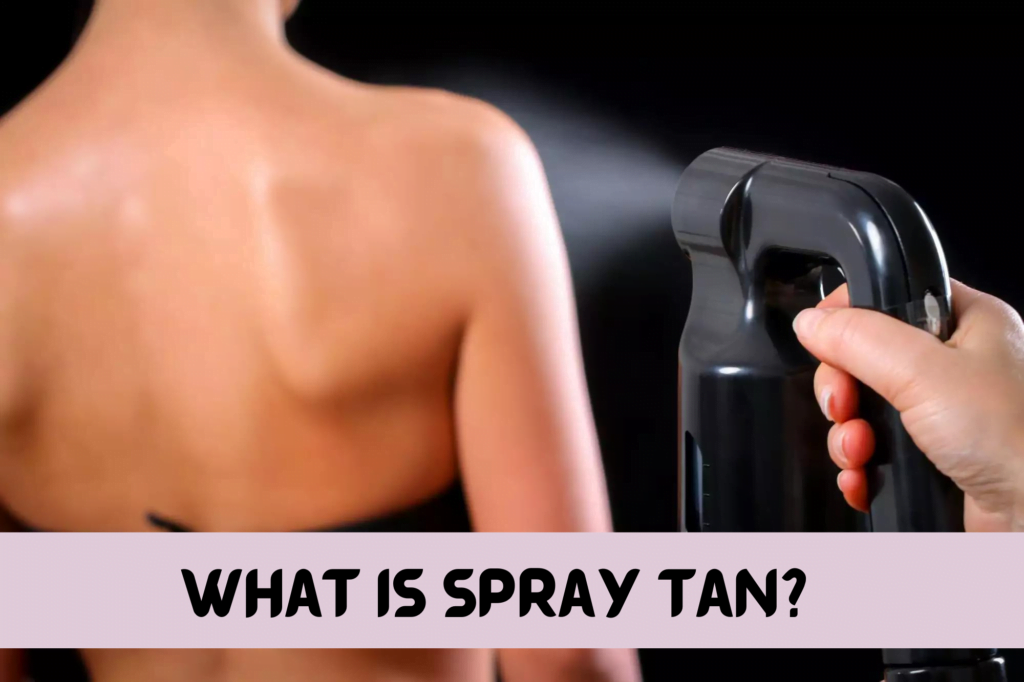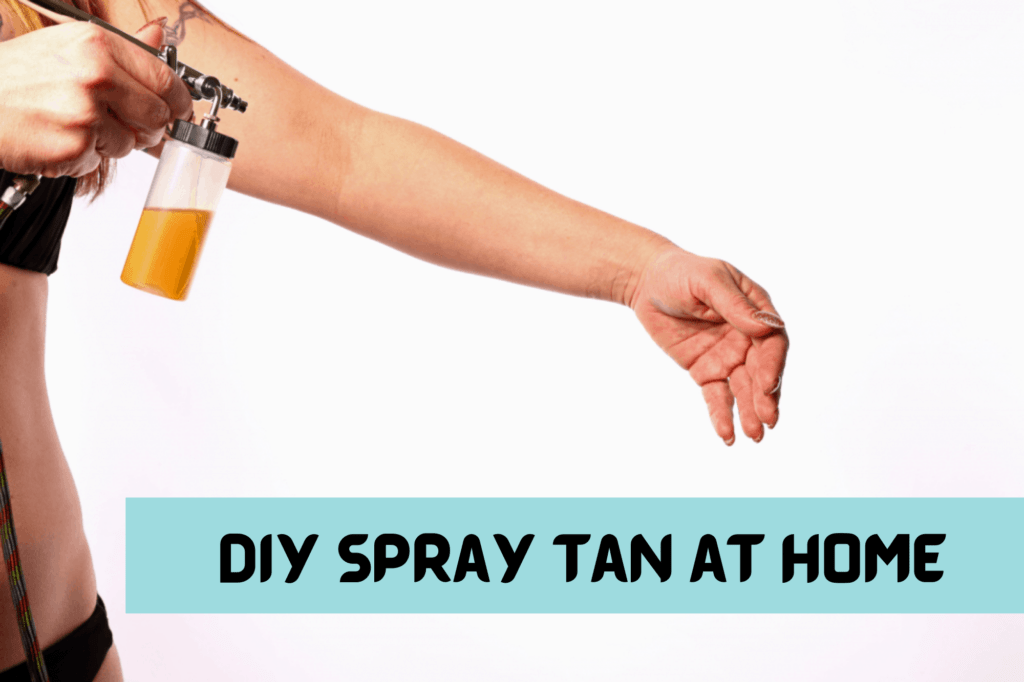Sunless tanning is a popular method of achieving a golden-brown tan without the risks associated with exposure to UV radiation. There are several types of sunless tanning products available, each with its own set of advantages and disadvantages. In this article, we will discuss the different types of sunless tanning methods and their pros and cons.
Self-Tanning Lotions and Creams
Self-tanning lotions and creams are a convenient and affordable way to achieve a sun-kissed glow.
They are widely available and easy to use at home.
They are available in a wide range of shades to suit different skin tones and preferences.
The effects of self-tanning lotions and creams typically last for several days, depending on factors such as the product, how it was applied, and how well the skin was prepared beforehand.
Pros:
- Self-tanning lotions and creams are easy to apply and easy to do at home.
- They are affordable and widely available.
- They are generally safe to use and produce natural-looking results.
Cons:
- It can be difficult to achieve an even application, which can result in streaking or uneven color.
- The color may fade quickly, requiring frequent reapplication.
- Some people may experience skin irritation or allergic reactions.
Self-Tanning Sprays
Self-tanning sprays are a popular choice for those who want a quick and even application.
You can use do it yourself at home or by an expert technician at a salon or spa.
Self-tanning sprays are typically done using an aerosol can or pump spray bottle. They are available in a range of shades to suit different skin tones and preferences.
They are good to tan the entire body or to target specific areas such as the face or legs.
Pros:
- Self-tanning sprays are easy to apply and can cover a large area quickly.
- They can produce natural-looking results with even coverage.
- They can last longer than self-tanning lotions and creams.
Cons:
- The spray can be difficult to control, resulting in uneven color or missed areas.
- The spray can be messy and may require a well-ventilated area to avoid inhaling the mist.
- Some people may experience skin irritation or allergic reactions.
Self-Tanning Mousse
Self-tanning mousse is a lightweight and easy-to-apply alternative to lotions and creams. It is a light, airy foam that dries quickly.
You can apply it yourself at home and is available in a range of shades to suit individual skin tones.
Self-tanning mousse involves using a foam or mousse applicator
Pros:
- Self-tanning mousse is easy to apply at home.
- It dries quickly and does not leave a greasy or sticky residue.
- It can produce a natural-looking tan with even coverage.
Cons:
- It can be difficult to achieve an even application, which can result in streaking or uneven color.
- The color may fade quickly, requiring frequent reapplication.
- Some people may experience skin irritation or allergic reactions.
Self-Tanning Wipes
Self-tanning wipes are another type of sunless tanning method that is becoming increasingly popular.
These wipes are pre-moistened with a self-tanning solution and are designed to be wiped over the skin to produce a natural-looking tan.
They are easy to use and can be carried in your bag for touch-ups on the go.
Here are some pros and cons of self-tanning wipes:
Pros:
- Self-tanning wipes are convenient and easy to use.
- They are portable and can be carried with you on the go.
- They produce a natural-looking tan with even coverage.
Cons:
- It can be difficult to achieve an even application, which can result in streaking or uneven color.
- The color may fade quickly, requiring frequent reapplication.
- Some people may experience skin irritation or allergic reactions.
Spray Tan
A spray tan, also known as airbrush tanning, is a sunless tanning method that is typically applied by a trained technician at a salon or spa.
It involves misting the skin with a solution containing DHA, which reacts with the amino acids on the surface of the skin to produce a temporary, golden-brown color.
This method provides a more even and professional-looking tan but can be more expensive than self-tanning at home.
Pros:
- Spray tan can produce a natural-looking tan with even coverage.
- The technician can customize the shade to suit individual skin tones.
- The spray tan can last up to 10 days with proper care.
Cons:
- It can be expensive, with prices varying depending on the salon and location.
- The application process can be time-consuming and may require several visits for optimal results.
- The tan may fade unevenly or leave streaks if not cared for properly.
During the application, it is important to follow the instructions carefully, including standing in specific positions and holding your breath at certain times. Work quickly and thoroughly to ensure that all areas are covered evenly. It is also important to allow the tanning solution to dry completely before dressing or coming into contact with water. It is recommended to moisturize the skin regularly to maintain the tan and prevent it from fading unevenly.
To achieve the best results with sunless tanning, it is important to prepare the skin properly before application. This involves exfoliating the skin to remove dead skin cells and ensure an even application. It is also important to avoid applying lotions, oils, or perfumes to the skin before the session, as these can interfere with the absorption of the tanning solution.
There are many other types of sunless tanning products like tanning nasal spray which are comparatively unsafe. There isn’t enough research available that can validate the usage of the nasal spray tan as safe.
Conclusion
In conclusion, there are several types of sunless tanning options available, each with its own set of advantages and disadvantages.
Self-tanning lotions and creams, self-tanning sprays, self-tanning mousse, and spray tan are all effective products for achieving a natural-looking tan without the risks associated with exposure to UV radiation.
To achieve the best results, it is important to prepare the skin properly, follow the instructions carefully, and moisturize the skin regularly to maintain the tan.





Comments are closed.